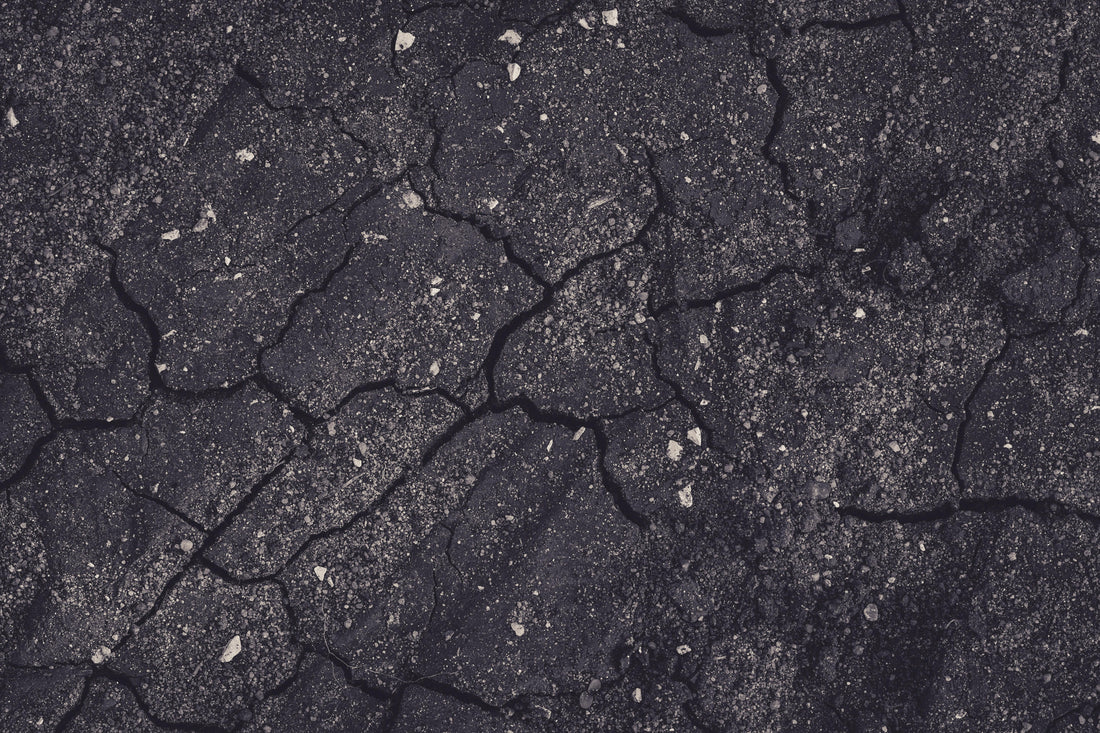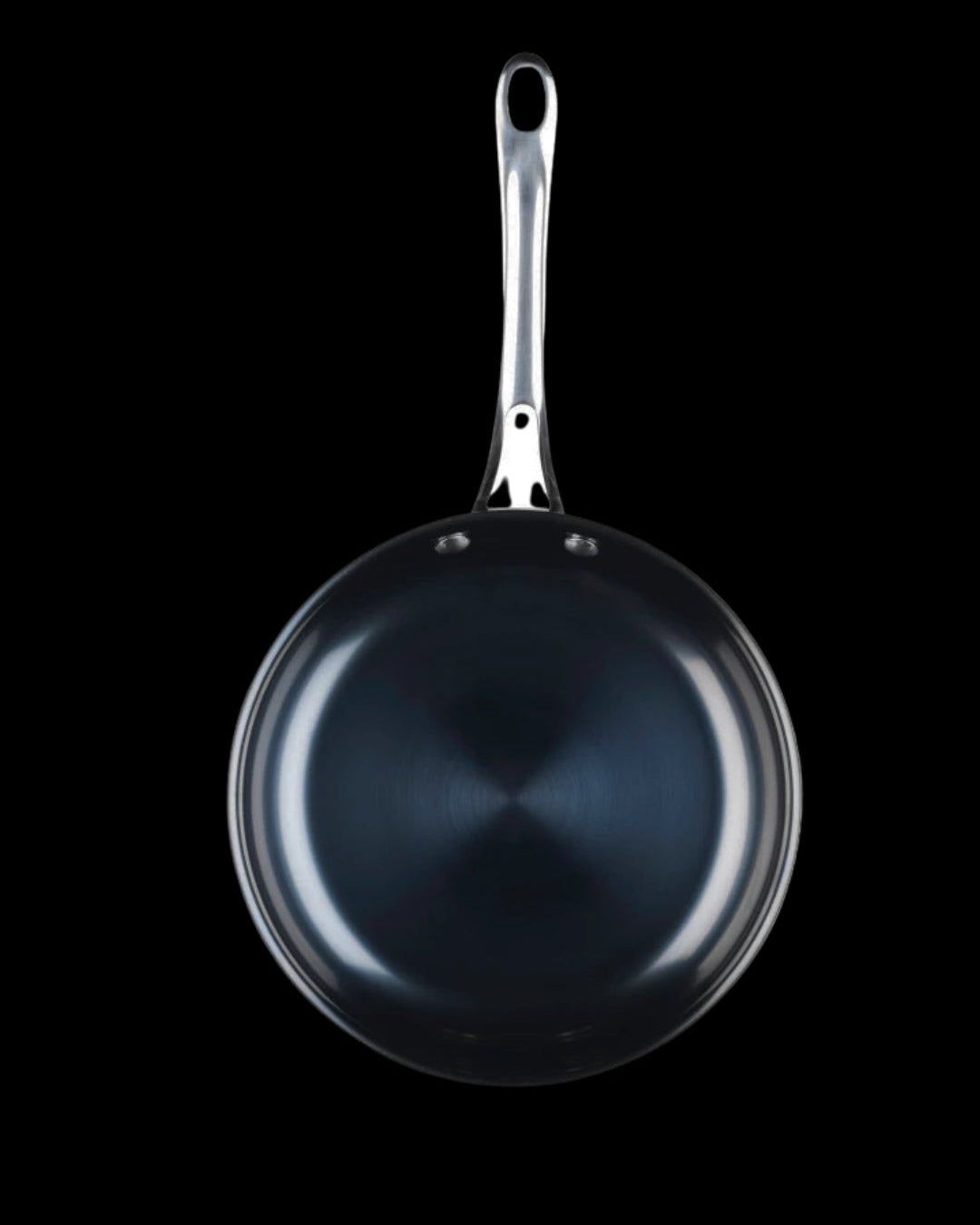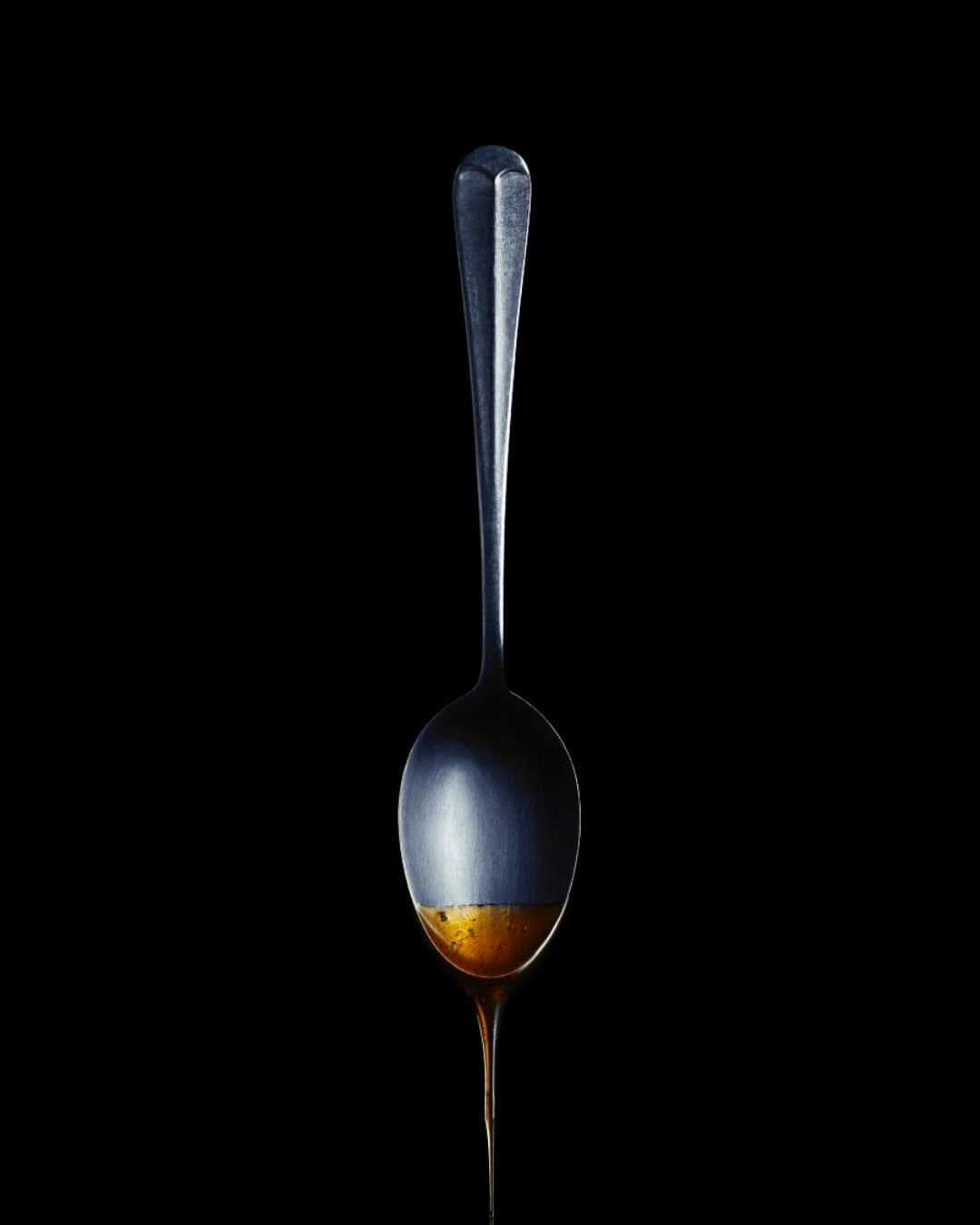
Heavy metals in our food – how clean is our food really?
Share
When we talk about a healthy diet, we often focus on vitamins, minerals and more. However, we rarely think about the fact that our food can also contain heavy metals and other pollutants that enter it through soil, water and air.
The question is not just "organic or not organic", but rather a broader one: in what soil and in what environment our food grew.
What are heavy metals and why are they a problem?
Heavy metals are naturally occurring elements found in soil and water. Some are necessary in small amounts (iron, zinc, copper), but others – such as lead , cadmium , arsenic , and mercury – are toxic and accumulate in the body.
- Lead – affects the nervous system and development of children. There is no safe level of lead.
- Cadmium – deposits in the kidneys and bones; linked to kidney failure and osteoporosis.
- Arsenic – linked to cardiovascular disease and certain forms of cancer.
- Mercury – especially dangerous to the brains of fetuses and young children; comes to us mainly through fish.
Which foods contain the most heavy metals?
- Leafy vegetables – spinach, lettuce, kale – absorb heavy metals well from the soil.
- Root vegetables – Potatoes, beets, carrots, celery – direct contact with soil increases the risk.
- Rice – Grows in flooded fields where arsenic is well absorbed from the soil and water.
- Fish and seafood – Larger fish accumulate mercury as it moves up the food chain.
- Cocoa and chocolate – Cocoa beans from South America may contain cadmium above the EU recommendation.
What about organic food?
Organic food is not automatically free of heavy metals. If the soil is naturally rich in metals, organic food may also contain them. However:
- organic farming does not use synthetic fertilizers or pesticides;
- organic food often contains more antioxidants and polyphenols;
- Domestic organic food is lower risk because the quality of soils and water is regularly checked.
What did the Agricultural and Food Board's 2024 report show?
In 2024, 284 food samples were analyzed in Estonia. There were eleven substances being tested – from heavy metals and PFAS to acrylamide and mycotoxins.
97.5% of all foods tested fully complied with European Union requirements. Exceedances were found in only four cases: one peanut butter, two smoked products and one sample of French fries. All other products complied with the maximum levels.
What exactly was investigated and what was found?
Heavy metals (lead, cadmium, mercury, arsenic, nickel)
Accumulate in the body and can damage the nervous system, kidneys, bones and fetal development. The highest levels were in fish (mercury) and cocoa (cadmium, nickel), but all were within the maximum limit. All fish contain some amount of heavy metals and persistent pollutants.
Dioxins and PCBs
They are produced in industrial and combustion processes and are deposited in animal tissues and fat. The highest values were in Baltic Sea fish (herring, sprat, whitefish), but all remained within the maximum limit.
PFAS substances (“forever chemicals”)
Used in packaging, non-stick pans, waterproof materials and foams. These compounds do not break down in the environment or in the human body and can accumulate in the blood and tissues over time. PFAS affect the immune system, hormonal balance and can disrupt metabolism. Since there is no safe level of PFAS , it is recommended to avoid them - prefer PFAS-free products.
During the 2024 monitoring, PFAS were found in small amounts in Baltic Sea fish , but not in other foods. Especially in herring, sprat and whitefish . The levels were lower in freshwater fish (perch, bream, pike). (Heavy metals were also found in all of them.)
Prefer:
- Freshwater fish (trout, catfish, carp) raised in Estonia – if the producer uses clean water and high-quality feed.
- Wild young freshwater fish (bream, roach, perch).
- Small fish from ocean fishing (sardines, anchovies, mackerel).
It is worth eating Baltic Sea fish less often – the level of these contaminants is within permissible limits, but the risk may accumulate with long-term consumption. Fish is a valuable food product, but its purity depends on the origin and the honesty of the producer.
Mycotoxins (e.g. aflatoxins)
Mold toxins that can form in nuts, grains, and dried goods, especially when stored in humid or warm conditions.
Aflatoxins are liver-damaging and carcinogenic compounds.
A 2024 monitoring study found that a peanut butter from China exceeded the aflatoxin limit by more than 100 times and the product was removed from the market. The problem is more common in imported products, especially those originating from regions where humidity and temperature are favorable for mold growth.
Prefer domestic or European nuts and nut butters.
If you want alternatives to peanut butter, almond, hazelnut, sunflower seed, or pumpkin seed butters are good options – they contain equally beneficial fats, but the risk of mold is significantly lower.
PAH substances (e.g. benzopyrene)
Formed during smoking, grilling and high-temperature cooking when fat drips onto hot surfaces. These compounds can also be formed during home grilling, especially when food is scorched or smoke comes directly onto the food. In the 2024 monitoring report, two smoked products – both meat and fish products – exceeded the benzopyrene limit.
Why weren't there problems with smoked products in the past?
In the past, food was smoked more slowly and at lower temperatures, mostly outdoors, where the smoke dissipated naturally. Clean, untreated wood was used, and the food was not directly exposed to the flame, which resulted in less soot and PAHs. Today, production is faster and more closed, using higher temperatures, less ventilated ovens, and sometimes smoke liquids, all of which can increase the formation of PAHs.
The environment was also cleaner in the past – wood and air were not affected by industrial emissions or traffic pollution. Today, a small amount of pollution can end up in the smoke or raw materials before processing. In addition, smoked products were more likely to be seasonal or holiday dishes, rather than everyday food items. If something is eaten more frequently, the risk of small amounts of pollution accumulating in the body over time also increases.
How to choose more consciously
PAHs are associated with health risks from long-term exposure, but their production can be significantly reduced. Prefer natural smoking and small producers who use real wood and slow, artisanal smoking. This method gives the food a natural flavor and reduces the formation of PAH compounds. Avoid industrial, strongly smoky-flavored products or products with smoke liquid - they may contain more residues and artificial compounds.
Nitrates and pesticide residues
Nitrates are found naturally in soil and plant tissue, but they are also used as fertilizer. The highest concentrations of nitrates are found in leafy greens and vegetables – such as spinach, lettuce and beets. In small amounts they are not dangerous, but if consumed in excess, nitrates can turn into nitrites , which prevent oxygen from binding in the blood and can increase health risks in the long term.
Pesticide residues result from the use of plant protection products. They may be permitted in small quantities, but their constant interaction with other pollutants can affect hormonal and nervous system balance. The 2024 food monitoring report did not find any pesticides or nitrates exceeding the maximum limit . The highest result was obtained in lettuce, but it remained below the European Union limit. Studies have shown that soaking vegetables in a baking soda solution (about 1 teaspoon of soda per liter of water) helps remove pesticide residues more effectively than simply washing them under water - in some cases even up to 80-90%.
Acrylamide
Acrylamide is formed when starchy foods are heated, such as French fries, crisps and cookies. The 2024 monitoring report found that only one sample of French fries exceeded the maximum limit.
Overall, acrylamide is present in small amounts in food, but moderate heating helps reduce its formation – a golden hue is better than dark brown.
Even if the products are within the norm, this does not mean that there is no risk. Heavy metals and persistent compounds (e.g. PFASs, dioxins) can accumulate in the body. A person receives these substances every day from several sources – food, water, air and even food containers. Therefore, the most important thing is to reduce consumption from several of the same sources at once and support the body's natural cleansing mechanisms.
Dietary habits and regional differences
It is important to understand that our bodies have adapted to the environment we live in. For example, in Asia, where people eat a lot of rice and fish every day, the diet, soil and even the microbiota are different. Their organisms have adapted to smaller amounts of heavy metals and arsenic that may be naturally present in their food. We, the Nordics, are not used to the same load - therefore the same amount may affect us differently.
This means that it is safest to eat food that is grown and produced in our own region. Local food is better suited to our metabolism, immune system and environment, offering fewer risks and better balance.
How to support the body against heavy metals and other pollutants?
The body tries to bind heavy metals and other pollutants and excrete them through the liver, kidneys, and intestines. If these compounds come in too much, the body can become overloaded. The right foods, herbs, and supplements can support this natural process.
Foods that help bind heavy metals and support liver function
- Coriander and parsley – help bind heavy metals and promote their excretion through the kidneys.
- Garlic and onions – contain sulfur compounds that activate the liver's detoxification system.
- Algae (spirulina, chlorella) – their cell walls bind metal ions and reduce their absorption. (Definitely organic and tested for heavy metals!)
- Fiber-rich foods – whole grains, legumes, and vegetables – bind waste products in the digestive tract and help them pass out.
- Lemon and green tea – support the liver's antioxidant defenses and glutathione production.
Domestic medicinal herbs
- Nettle – stimulates kidney function and helps remove waste products from the body.
- Dandelion – stimulates bile production and supports liver recovery.
- Lingonberry and blueberry leaves – anti-inflammatory, support kidney function.
- Yarrow and chamomile – help digestion and liver function.
- Peppermint and lemon balm – relieve liver and digestive strain and improve bile secretion.
Supplements that support the body's cleansing mechanisms
- Zinc and selenium – reduce the binding of heavy metals in tissues and support liver enzymes.
- Vitamin C – helps make metal ions more soluble so they can be excreted through the kidneys.
- Alpha-lipoic acid (ALA) – binds free metal ions and supports cell protection.
- N-acetylcysteine (NAC) – supports glutathione production in the liver.
- Magnesium and B vitamins – necessary for the functioning of liver detoxification enzymes.
Daily steps to reduce risk
- Prefer domestic and organic food.
- Wash and peel the vegetables.
- Diversify the menu.
- Avoid overly processed and smoked foods.
- Diversify fish consumption, avoiding excessive amounts of Baltic Sea fish (e.g. herring, sprat, whitefish).
- Use herbs and foods rich in fiber.
- Keep your liver and kidneys working properly – they are the body's natural filters.
- Ask manufacturers if they test for heavy metals. Many brands that do have this information on their websites.
Final word: it all starts with the soil
Heavy metals and other pollutants cannot be completely avoided – they are found in the air, water and soil. But we can make informed choices that reduce the risk and support the body's natural ability to cleanse itself.
Home-grown food means lower risk and better control. A varied menu reduces the burden on the body. Medicinal herbs and fiber support the body's natural defenses.
The only way you can truly know for sure what's in your food is if you grow it yourself or know someone who does. Everything else is based on trust – trust that food producers, suppliers and authorities are doing their jobs honestly and transparently. This trust is fragile but essential – and every informed consumer can help strengthen it by asking questions, researching and making choices that support both their health and nature.
The articles on this page are designed to raise awareness and encourage you to make better choices in your daily life. The goal is not to scare you, but to open up topics that are often not talked about - so that you understand how food, environment and habits affect your well-being. We share knowledge and observations based on our experience and research, also based on scientific sources. This information is not a substitute for professional medical advice or diagnosis. Listen to your body, ask questions and take conscious steps towards better health.
References and sources
- Agricultural and Food Board (2025). Contaminants in food 2024 monitoring report. https://pta.agri.ee/saasteained-toidus-2024
- EFSA (European Food Safety Authority). Reports on the risk assessment of heavy metals, PFAS substances and dioxins.
- EFSA CONTAM Panel (2014): Arsenic in Food.
- EFSA CONTAM Panel (2018): Lead in Food.
- EFSA (2020): Risk to human health related to PFASs in food.
- World Health Organization (WHO). Lead poisoning and health (2023). https://www.who.int/news-room/fact-sheets/detail/lead-poisoning-and-health
- British Journal of Nutrition (2014). Higher antioxidant and polyphenol content in organic crops.
- Journal of Nutrition (2009). Sulfur compounds in garlic and onion enhance hepatic detoxification enzymes.
-
Yang, T., Luo, L., & Huang, L. et al. (2017).
Effectiveness of Commercial and Homemade Washing Agents in Removing Pesticide Residues on and in Apples.
Journal of Agricultural and Food Chemistry , 65(44), 9744–9752.
DOI: 10.1021/acs.jafc.7b03118


